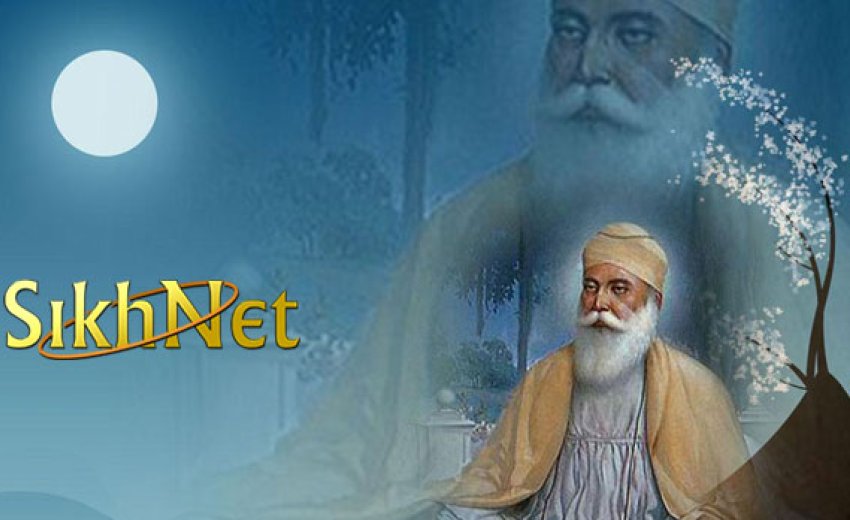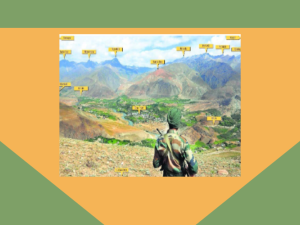This is the first in a series of articles that will detail Guru Nanak's travels in far off lands. This article details his travels to Singapore and the empire of Majapahit.
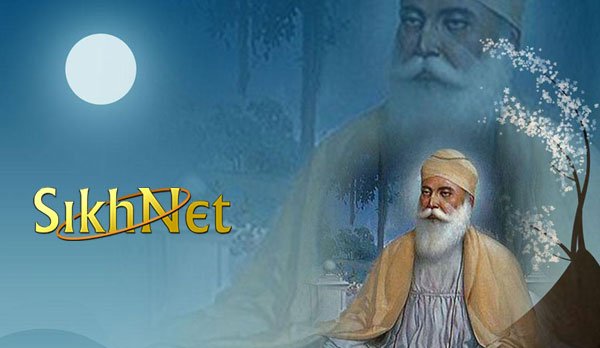
Guru Nanak travels to watery lands east of India
Janamsakhi Bhai Bala mentions Guru Nanak having visited Brahmpur. [1] Giani Gyan Singh mentions: "From Manipur he (Guru Nanak) left for Salmaladvipa…and sat in a garden by the side of a pond in Brahmpur [2] According to Dr Kohli: The name Brahmpur mentioned in Janamsakhi appears to connote Burma…" [3]. Gyani Lal Singh Sangrur mentions of Guru Nanak's visit to Burma and states "Burma… had a follower of Buddha as the king. When he heard that Guru Nanak preaches that all belong to One and the only One God who is the Creator of the entire universe, he found this to be against Buddhism. To stop this, he proceeded ferociously to punish Guruji. Seeing Guru Nanak and listening to his sermon however he mellowed down and fell at Guru's feet".[4] Dr Arjan Singh Mann mentions; "He (Guru Nanak) travelled through Tibet, China, Japan , Java, Sumatra, Philippine and Manipur states through Burma.[5] Burma, these days known as Myanmar is the country along Eastern border of India. As per Joginder Singh Sahi.[6] and Gurdham Didar [7] Guru Nanak visited Singapore (in Burma) in 1516 AD[7] (Samvat 1573. Sahi gives the photograph of the Gurdwara to commemorate his visit to Singapore. [6]
Background on Singapore
When the prince Sri Tri Buana (also known as Sang Nila Utama), who landed on the island (of Singapore) during the 13th century, saw a lion the prince took this as an auspicious sign and founded a settlement called Singapore, which means "Lion City" in Malay. [8]. In the 1390s, Palembang prince, Parmeswara, who ruled Singapore fled to Temasek after being deposed by the Majapahit kingdom. During the 14th century, Singapore was caught in the struggle between Siam (now Thailand) and the Java-based Majapahit Empire for control over the Malay Peninsula. According to Sejarah Melayu, Singapore was defeated in one Majapahit attack. He ruled the island for several years, before being forced to Melaka where he founded the Sultanate of Malacca Sultanate of Malacca.[8] Singapore became an important trading port of the Malacca Sultanate [9] and later the Sultanate of Johor. In the early 15th century, Singapore was a Thai vassal state, but the Malacca Sultanate which Iskandar had founded quickly extended its authority over the island. After the Portuguese seizure of Malacca in 1511, the Malay admiral fled to Singapore and established a new capital at Johor Lama, keeping a port officer in Singapore.
Guru Nanak deems king the ruler of 100 islands
Janamsakhi Bhai Bala (JS BB) edited by Dr Surinder Singh Kohli also mentions that Guru Nanak visited Kings Sudhar Sain, Madhur Bain and Kawal Nain. "Guru Nanak bestowed the kingdom of 100 islands in 3 continents to Sudhar Sain on the recommendation of Inder Sain. These islands were ruled by 18 kings. (p.176) Eighth-century Chinese records identify 18 Pyu states throughout the Irrawaddy valley. This Empire was earlier ruled by Kawal Nain son of Sur Sidh Misr/Brahman by caste. (p.198) [10]. Guru Nanak travelled for seven months and thirteen days to Swanrnpur, the capital of the kingdom of Kawal Nain which could be seen from 4 cosa from sea. The empire of Kawal Nain was spread in 7700 jojan. It had 18 vessel states in 3 continents ruled by 17 kings under him. These were: (a). Madhurbain (b). Sudharsain (c).Naga Paras Ram (d) Sukh Sagar (e). Raja Atika Ghatika (f). Sukhchain (g). Budh Bibek Balka (h). Asrapnah (j). Sudh Sobhalka (k). Sagar Sain (l). Raja Nain Jot (m). Bir Bain (n).Raja BalSanghar (o) Lal Chain (p). Raja Turtrang (q). Rai Ain (r) Raja Magan Rai (s) Kawal Nain (JS BB p.166, 178, pp.192-198) [10]
The powerful Majapahit empire could be the empire of 100 islands
The ruler of 100 islands is not found mentioned in any of the resource materials. However Nagarakertagama (Desawarñana) claimed for Majapahit an empire of 98 tributaries, stretching from Sumatra to New Guinea….. Majapahit fleets periodically visited many parts of the archipelago to obtain formal submission, or that the splendour of the Majapahit court led many regional rulers to send it tribute, in much the same way as they sent tribute to China, without any intention of submitting to orders from eastern Java. The trading power of Majapahit gave it a powerful sanction against defiant rulers. The eastern Java kingdom established especially close trading links with pepper suppliers in Sumatra and with other spice-producing regions in eastern Indonesia. It is probably best, therefore, to assess Majapahit's claims of empire as representing real authority, with the proviso that such authority never gave Majapahit significant administrative power outside Java, Bali and Madura. [11]
Background on the Majapahit empire
Majaapahit was an Indianized kingdom based in eastern Java from 1293 to around 1527. Its greatest ruler was Hayam Wuruk, whose reign from 1350 to 1389 marked the empire's peak, when it dominated other kingdoms in the southern Malay Peninsula, Borneo, Sumatra, Bali, Kalimantan and eastern Indonesia, and the Philippines [12] Majapahit Empire was the last of the major Hindu empires of the Malay Archipelago and is considered one of the greatest states in Indonesian history. Majapahit society developed a high degree of sophistication in both commercial and artistic activities. Its capital was inhabited by a cosmopolitan population among whom literature and art flourished. It had a thriving cash economy based on rice cultivation and trade which supported a wide variety of industries and professions. Around 1527 it succumbed to the Sultanate of Demak.[13]
Guru Nanak recognizes the kings humility
As per Janam Sakhi Bhai Bala: The king did not want his people to bow before him. He did not go to any one himself but whatever he said was done. Guru Nanak said, "It is time of everyone. All are God's Creation. They are as God's creation as I am. We are not going to sleep in his protection but we must see him. The king who has won over pride; I have placed Sudhar Sain over him. Let us see what God does." (JS BB, p.196). [14] There have been records to show that Guru Nanak visited China and the place 'Nanking' is named after Guru Nanak's name'.[15] In various Janamsakhis also, the accounts are available describing Guru Nanak's journey to 'Brahampur', 'Silmila Dweep' [16] and numerous other Dvipas (Islands). His journey by sea is well explained by Dr. Kohli [17], which leaves no doubt that Guru Nanak visited the islands of 3 continents.
Majapahit kingdom thus fits into the explanation of Bhai Bala Janamsakhi hence discussed in detail further.
The Majapahit Empire was based in eastern Java and ruled much of the Southern Malay, Borneo, Sumatra, and Bali from about 1293 to around 1527. This Hindu-Buddhist state emerged as a trading Empire by the end of the 13th century and gained control over much of the archipelago, including Sumatra, Borneo, Sulawesi, Maluku, Sumbawa, Lombok, and Timor. Majapahit Kingdom was the last great Hindu-Buddhist Kingdom of Indonesia, whose influence started to decline in the late 14th century and early 15th centuries. The Kingdom finally collapsed at the beginning of the 16th century. (Ricklefs 1993: 19)[18].
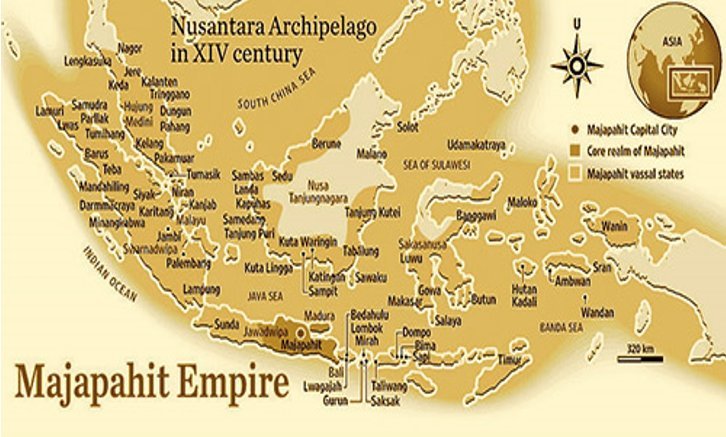
Further details about the empire
During the reign of Hayam Wuruk (1350-1389) there were 12 provinces of Majapahit, administered by king's close relatives. When Majapahit entered the imperial phase during the administration of Gajah Mada, several overseas vassal states were included within the Majapahit sphere of influence,(presumed to be 18 or more as per Janamsakhi!) as the result the new larger territorial concept was defined. Some of the important states under Majapahit were Sumatra, Borneo, Sulawesi, Maluku, Sumbawa, Lombok, and Timor. Other states associated with the kingdom included Sunda, Malay, and Burma.
The model of political formations and power diffusion from its core in Majapahit capital city that radiates through its overseas possessions was later identified by historians as "mandala" model. The term mandala derived from Sanskrit "circle" to explain the typical ancient Southeast Asian polity that was defined by its centre rather than its boundaries, and it could be composed of numerous other tributary polities without undergoing administrative integration.[19] These areas usually had their own indigenous rulers, enjoyed substantial autonomy and had their own political institution intact without further integration into Majapahit administration. The same mandala model also applied to previous empires; Srivijaya and Angkor and also Majapahit's neighboring mandalas; Ayutthaya (Ayudhya) and Champa. The king was the paramount ruler, as the chakarvartin he was considered as the universal ruler and believed to be the living god on earth. The king held the highest political authority and legitimacy.
This system of governance fits into the description of Kawal Nain's kingdom and his administration system as explained in Janamsakhi Bhai Bala.
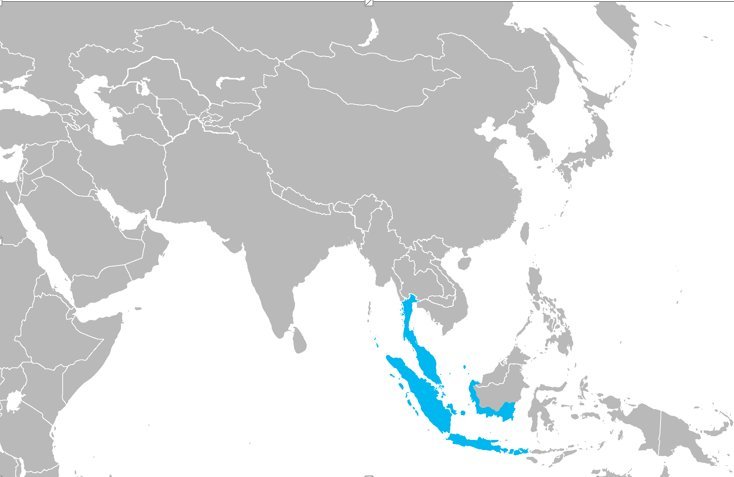
A brief of the travels to Majapahit as per Janam Sakhi Bhai Bala [20] are as follows:
Starting from Patna in boat/ship in Ganga, Guru Nanak went to Dacca and Chittagong from where he reached Singapore in Tenassarim region of Majapahit kingdom. 'Guru Nanak reached Asrapan (Tenassarim) an island in the ocean after a journey of fifteen days and fifteen nights. Since Chittagong was under the control of king of Sondeep and later under Arakan and not under Majapahit, it is not being considered here as Bisiar Des. Manipur and Cachar are not islands and were not under the influence of Majapahit hence these too are not considered. After Chittagong, the only state which comes first under the influence of Majapahit is Tennasarim, the Southern part of Burma where Singapore is the main city. This mountain chain is named after the Tenasserim Region (Tanintharyi) in Burma and its name in Thai is Thio Khao Tanaosi, also spelt as Tanawsri, Tanao Sri, Tanaw Sri or in Malay as Tanah Seri. Asparan or Sparan are the jackfruit grown along Tenasserim. [26] There were frequent travels from Chittagong to Tennasarim en route to east Asian and China. Niccolò de' Conti (1395-1469) travelled from Sumatra to Tennasarim and then to the mouth of Ganges (Dacca) and it took him 16 days. [27] Tennasarim is an island and was then under Majapahit Empire. It takes about the same time to travel to Tennasarim from Patna as Niccolo de Conti took a few years earlier. Giani Lal Singh Sangrur mentions: Guru ji visited Rangoon and Mandley etc. Buddhism had large impact in this area. He held discussions with famous religious leaders." [28] Thus Tennasarim is considered here to be the country of Jhanda Badhi and the place visited as Singapore and other locations in Burma and other countries of East Asia.

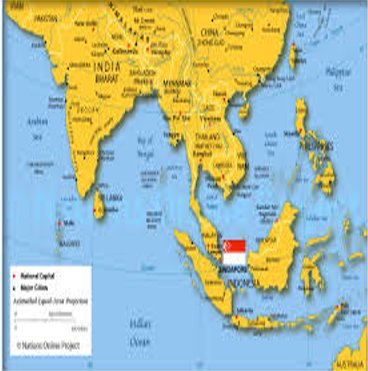
Guru Nanak is hosted by friendly empire and gives honor to the ruler
While in Tennasarim, Inder Sain guided Guru Nanak to Jhanda Badhi a saintly person with courtesy. The Guru and his companions were received well and given good food and provided staying arrangements by Jhanda Badhi. The Guru blessed Jhanda Badhi to be the head preacher of entire East Asia. Inder Sain established a great rapport with the Guru. He too was blessed by the Guru. As the King Sudhar Sain got the news of Guru Nanak's arrival, He said, "A saint has come to my city that has been accepted as Guru by Jhanda Badhi. Please bring him to me". Inder Sain his nephew proceeded to Guru Nanak with fruits and gifts. Bowing before him he gave whatever he had brought. He prayed to the Guru "Sir, the king is eagerly waiting for you. You must bless him". Blessing Sudhar Sain, Guru Nanak sang a hymn in Raag Bilawal, 'Mite aandh agg gaya bikara, Aisa sahib (meet the great Lord, whom we love). Guru Nanak blessed Sudhar Sain and bestowed upon him the kingdom of 100 islands ruled by eighteen kings. He ruled three continents on the name of Guru Nanak and became a great person ....Guru Nanak stayed with king Sudhar Sain and Jhanda Badhi for one month on the request of Inder Sain.[21]
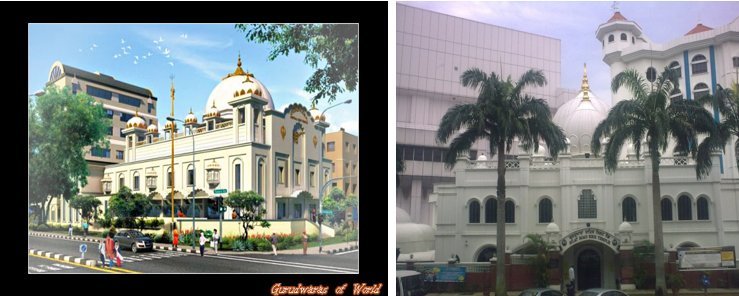 | |
| Central Sikh Temple Wadda Gurdwara (L) and Sahib Silat Road Gurdwara | |
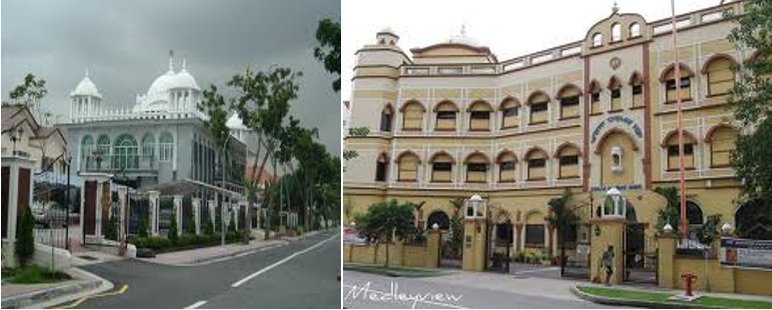 |
| Other Gurdwaras in Singapore |
Gurdwaras today
--------------------------
References
[1] Surinder Singh Kohli (Dr) ed.,1995, Janamsakhi Bhai Bala, Chandigarh, Punjab University, 2nd
edn.pp 170
[2] Giani Gyan Singh, 1955 Twareekh Guru Khalsa, Part I, Patiala, Bhasha Vibhag, , p.121 mentions: "From Manipur he left for Salmaladvipa…and sat in a garden by the side of a pond in Brahmpur."
[3] Surinder Singh Kohli (Dr), 1978, Travels of Guru Nanak, Chandigarh, Punjab University, (2nd edn), p.54
[4] Gyani Lal Singh Sangrur, 1955, Guru Khalsa Twareekh Ludhiana, Lahore Book Shop, 3rd edition p. 71
[5] Arjan Singh Mann Dr, 1959, Guru Tegh Bahadur and Assam, Sikh Publishing House, New Delhi, p.47
[6] Joginder Singh Sahi , 'Sikh Shrines in India and abroad, Faridabad, Common World, p.137.
[7] Gurdham Didar, Dharam Prachar Committee, Sherman Gurdwara Parbandhak Committee, Sri Amritsar, p.265
[8] "Singapore - Pre-colonial Era". U.S. Library of Congress. Retrieved 18 June 2006.
[9] "Singapore: History, Singapore 1994". Asian Studies @ University of Texas at Austin. Archived from the original on 23 March 2007. Retrieved 7 July 2006.
[10] Surinder Singh Kohli (Dr) ed.,1995, Janamsakhi Bhai Bala, Chandigarh, Punjab University, 2nd
edn.pp.176,198.
[11] (a) Hall, D.G.E., A History of South-East Asia. New York: St. Martin's Press, 4th ed., 1981.
(b)Munoz, Paul Michel, Early kingdoms of the Indonesian archipelago and the Malay Peninsula Singapore:
Editions Didier Millet, 2006.
(c) Pigeaud, Theodore G. Th., Java in the 14th century: a study in cultural history. The Hague: Nijhoff, 5
Vols. 1962.
[12] Martinus Nijhoff, 1962 Rakawi Parpantja, Java in the 14th Century, A Study in Cultural History: The
Negara-Kertagama by Pakawi Parakanca of Majapahit, 1365 CE, The Hague
[13] Ricklefs, Merle Calvin (1993). A History of Modern Indonesia since c. 1300 (2nd ed.). Stanford University
Press / Macmillans. ISBN 9780804721950 , p.19
[14] Kohli, op cit p.196.
[15] Surinder Singh Kohli (Dr), 1978, Travels of Guru Nanak, Chandigarh, Punjab University, (2nd edn), p.12
[16] Kirpal Singh (ed), 1969, Janamsakhi Prampara, Patiala, Punjabi University, p.271
[17] Kohli, ed. 1995, Janam Sakhi Bhai Bala, pp.189-192
[18] Ricklefs 1993: op cit p.19.
[19] Munoz, Paul Michel, Early kingdoms of the Indonesian archipelago and the Malay Peninsula Singapore:
Editions Didier Millet, 2006.
[20] http://www.globalsecurity.org/military/world/indonesia/history-majapahit...
[21] Surinder Singh Kohli (Dr) ed.,1995, Janamsakhi Bhai Bala, Chandigarh, Punjab University, 2nd edn Col Gerini in his researches on the "Ptolemy's Geography of astern Asia, "writes: "The term Salmali, justified to a certain extent by the abundance of silk cotton tree (Salmali-Bombax Malabaricum) in the low jungles of the coast, in more or less as in the dvipas of the Purnanas a conventional epithet. I believe it to be a corruption of Suvarnamali: for Siamese MSS, contain a legend of Buddha having left one of his holy footprints on the shining mount of Suvaranamalgiri in the Tanasserim province which I identify with Kuta-Salmali peak on whose summit the Ramayana paces the abode of garuda. The name of the Peninsula, Malaya dvipa, mentioned besides in several MSS., in the Kalyani inscriptions of Pegu, is evidently connected with the alternative designations Salmali and Suvarnamali dvipa." This dvipa was named after white Plaksha (or Pakhar) tree which was found is abundance in the region. The word Plaksha in Sanskrit means white.
[15] Shamsher Singh Ashok, Nov 1969, Puratan Janamsakhi, Sri Amritsar, Shiromani Gurdwara Parbandhak
Committee
[16] Surinder Singh Kohli, 1978, Travels of Guru Nanak, Chandigarh, Punjab University, (2nd end) P-54
[17] Trilochan Singh (Dr.), 1972, Jeevan Charit Guru Nanak Dev, Delhi Gurdwara Parbandhak Board p-166
[18] Gurmukh Singh (Major): Historical Sikh Shrines, Sri Amritsar, Singh Bros. p. 77
[19] Surinder Singh Kohli (Dr), p-55-6
[20] Trilochan Singh (Dr.), Jeevan Charit Guru Nanak Dev, Delhi Gurdwara Parbandhak Board p-166

